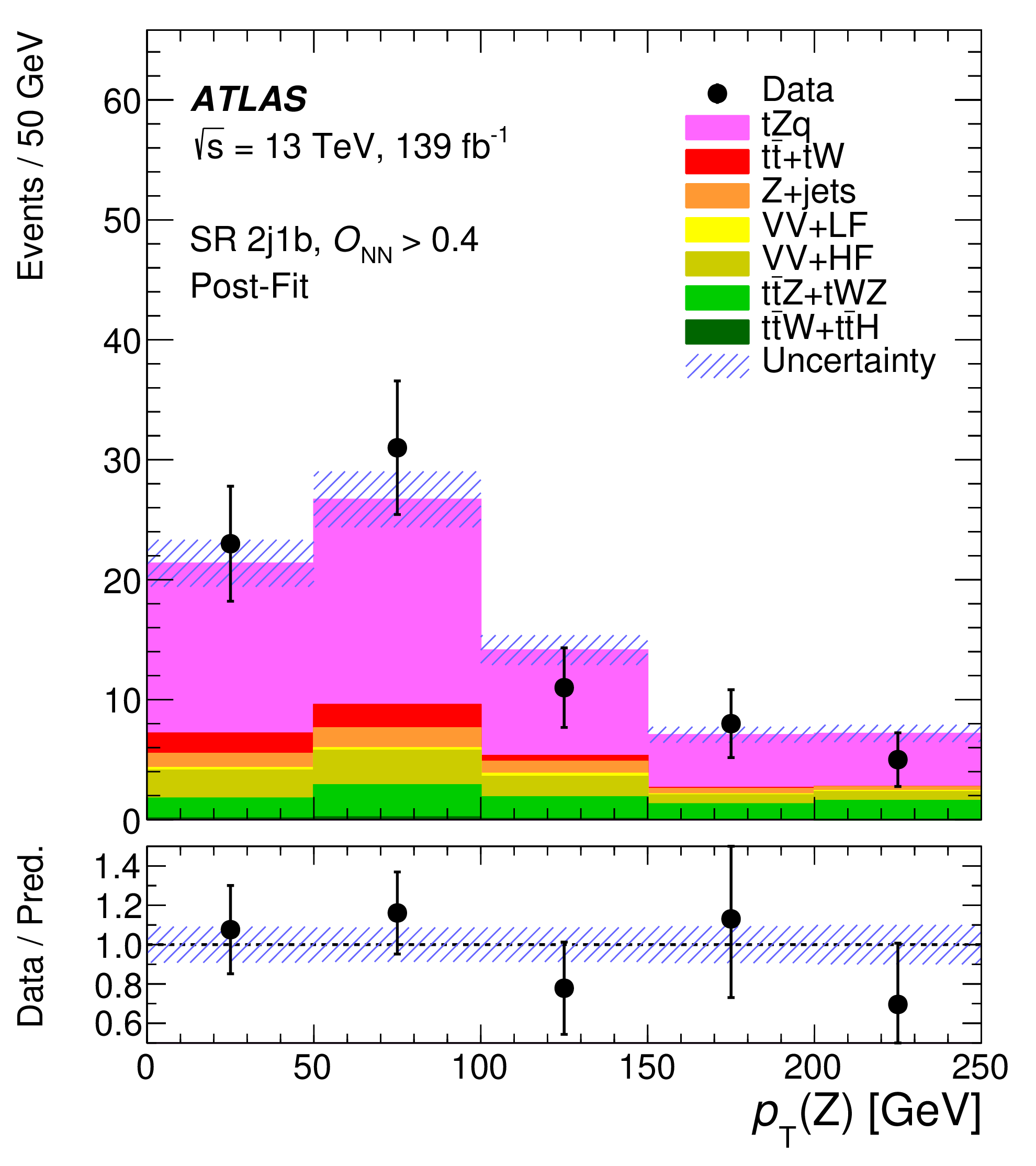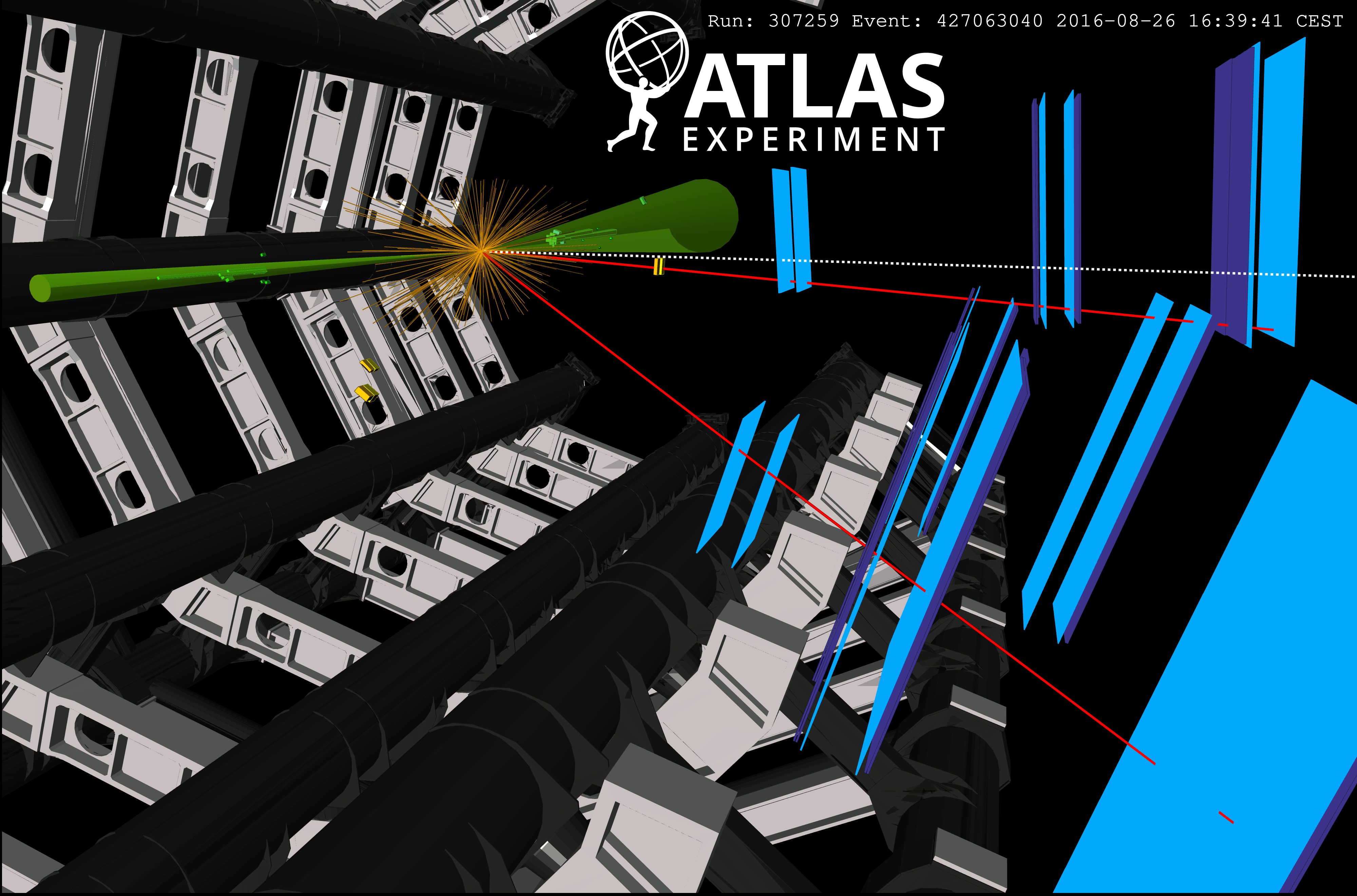25 years on: a single top quark partners with the Z boson
21 February 2020 | By

A quarter-century after its discovery, physicists at the ATLAS Experiment are gaining new insight into the heaviest-known particle: the top quark. The huge amount of data collected during Run 2 of the LHC (2015-2018) has allowed physicists to study rare production processes of the top quark in great detail, including its production in association with other heavy elementary particles.
In a new paper released this week, the ATLAS Collaboration reports the observation of a single top quark produced in association with a Z boson (tZq) using the full Run 2 dataset, thereby confirming earlier results by ATLAS and CMS using smaller datasets. To achieve this new result, physicists studied over 20 billion collision events recorded by the ATLAS detector, looking for events with three isolated leptons (electrons or muons), a momentum imbalance in the plane perpendicular (transverse) to the proton beam, and two or three jets of hadrons originating from the fragmentation of quarks (with one jet originating from a b-quark). Only about 600 candidate events with such a signature were identified (i.e. the signal region) and, despite strict selection criteria, only about 120 of those are expected to come from the tZq production process.
To best separate their signal from background processes, ATLAS physicists trained an artificial neural network to identify tZq events using precisely simulated data. The neural network provided each event with a score (ONN) that represented how much it looked like the signal process. To check that the simulation fed to the neural network gave a good description of the real data, physicists looked at events with similar signatures (control regions) that are dominated by background processes. Various kinematic distributions of the 600 selected signal-region events were also checked.
In a new paper released this week, the ATLAS Collaboration confirmed the observation of a single top quark produced in association with a Z boson using the full Run 2 dataset.

Researchers evaluated the neural network score in both signal (Figure 1) and control regions so that the background levels could be constrained using real data. The tZq signal was extracted and the rate of such events being produced in the given data sample (i.e. the cross-section) was computed. The uncertainty on the extracted cross-section is 14%. This is over a factor of two more precise than the previous ATLAS result, which was based on almost four times less data (from 2015 and 2016). The cross-section was found to be in agreement with the prediction from Standard Model, confirming that even the heaviest particles in the Standard Model still behave as point-like elementary particles.
Further, by selecting for events identified by the neural network as very likely to be tZq events (ONN > 0.4), ATLAS physicists could examine whether the kinematic distributions are well described by the Standard Model calculations. Figure 2 shows that this is indeed the case.
With the observation of the tZq production process now confirmed, ATLAS researchers can anticipate its study in even greater detail. Measurements of the cross-section as a function of kinematic variables will allow physicists to carefully probe the top quark’s interactions with other particles. Will more data unveil some unexpected features? Look forward to seeing what Nature is hiding in the top world.
Learn more
- Observation of the associated production of a top quark and a Z boson in proton-proton collisions at 13 TeV with the ATLAS detector (arXiv: 2002.07546, see figures)
- Measurement of the production cross-section of a single top quark in association with a Z boson in proton-proton collisions at 13 TeV with the ATLAS detector (Phys. Lett. B 780 (2018) 557, see figures)
- CMS Collaboration: Observation of single top quark production in association with a Z boson in proton-proton collisions at 13 TeV (Phys. Rev. Lett. 122 (2019), 132003)
- New rare pairs of heavy friends in ATLAS, Physics Briefing, July 2017
- See also the full lists of ATLAS Conference Notes and ATLAS Physics Papers.



